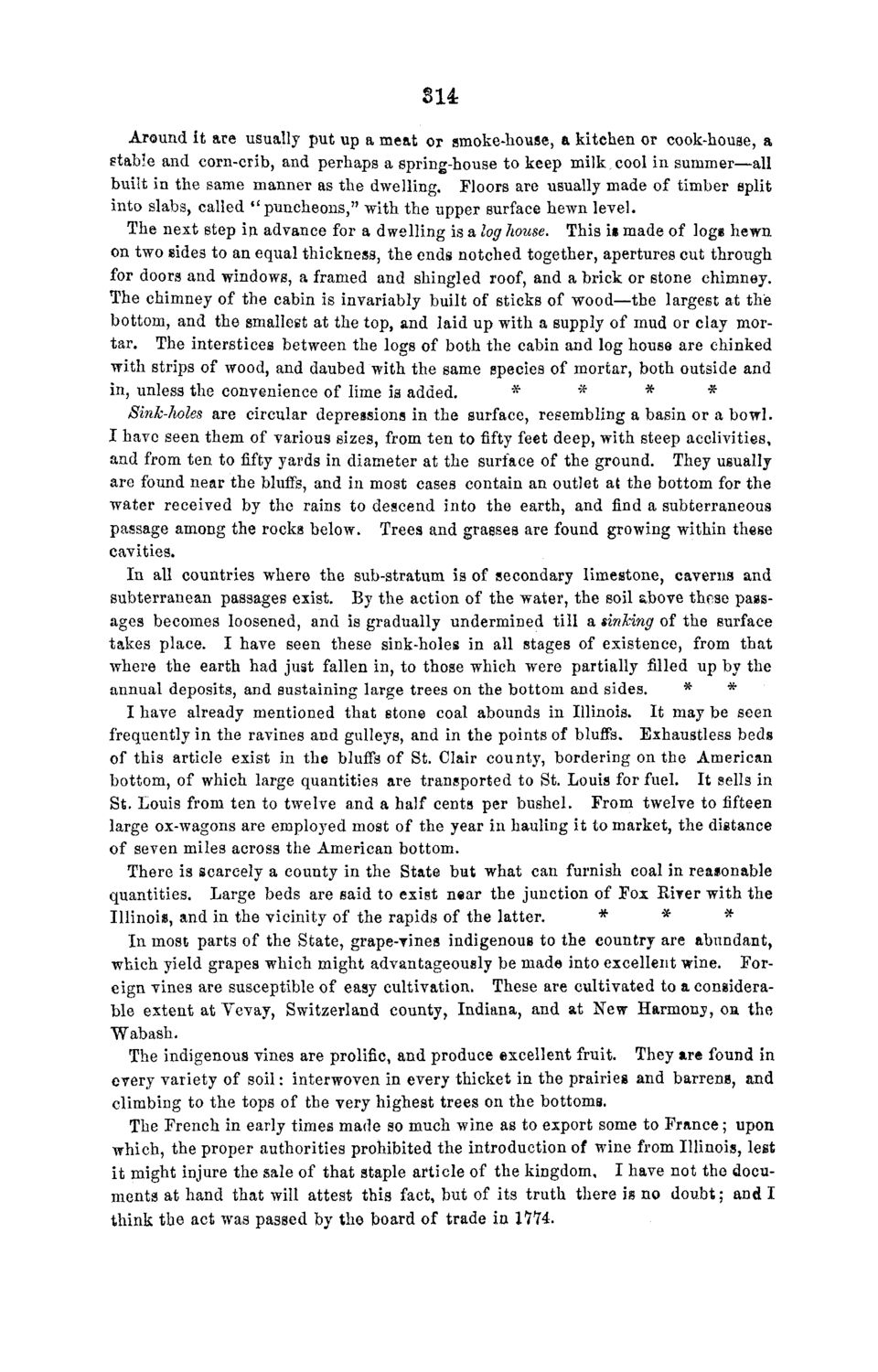| |
| |
Caption: Board of Trustees Minutes - 1868
This is a reduced-resolution page image for fast online browsing.

EXTRACTED TEXT FROM PAGE:
3H Around it are usually put up a meat or smoke-house, a kitchen or cook-house, a stable and corn-crib, and perhaps a spring-house to keep milk cool in summer—all built in the same manner as the dwelling. Floors are usually made of timber split into slabs, called "puncheons," with the upper surface hewn level. The next step in advance for a dwelling is a log house. This is made of logs hewn on two sides to an equal thickness, the ends notched together, apertures cut through for doors and windows, a framed and shingled roof, and a brick or stone chimney. The chimney of the cabin is invariably built of sticks of wood—the largest at the bottom, and the smallest at the top, and laid up with a supply of mud or clay mortar. The interstices between the logs of both the cabin and log house are chinked with strips of wood, and daubed with the same species of mortar, both outside and in, unless the convenience of lime is added. # * * * Sink-holes are circular depressions in the surface, resembling a basin or a bowl. I have seen them of various sizes, from ten to fifty feet deep, with steep acclivities, and from ten to fifty yards in diameter at the surface of the ground. They usually are found near the bluffs, and in most cases contain an outlet at the bottom for the water received by the rains to descend into the earth, and find a subterraneous passage among the rocks below. Trees and grasses are found growing within these cavities. In all countries where the sub-stratum is of secondary limestone, caverns and subterranean passages exist. By the action of the water, the soil above these passages becomes loosened, and is gradually undermined till a sinking of the surface takes place. I have seen these sink-holes in all stages of existence, from that where the earth had just fallen in, to those which were partially filled up by the annual deposits, and sustaining large trees on the bottom and sides. * * I have already mentioned that stone coal abounds in Illinois. It may be seen frequently in the ravines and gulleys, and in the points of bluffs. Exhaustless beds of this article exist in the bluffs of St. Clair county, bordering on the American bottom, of which large quantities are transported to St. Louis for fuel. It sells in St. Louis from ten to twelve and a half cents per bushel. From twelve to fifteen large ox-wagons are employed most of the year in hauling it to market, the distance of seven miles across the American bottom. There is scarcely a county in the State but what can furnish coal in reasonable quantities. Large beds are said to exist near the junction of Fox River with the Illinois, and in the vicinity of the rapids of the latter. # * * In most parts of the State, grape-vines indigenous to the country are abundant, which yield grapes which might advantageously be made into excellent wine. Foreign vines are susceptible of easy cultivation. These are cultivated to a considerable extent at Yevay, Switzerland county, Indiana, and at New Harmony, on the "Wabash. The indigenous vines are prolific, and produce excellent fruit. They are found in every variety of soil: interwoven in every thicket in the prairies and barrens, and climbing to the tops of the very highest trees on the bottoms. The French in early times made so much wine as to export some to France; upon which, the proper authorities prohibited the introduction of wine from Illinois, lest it might injure the sale of that staple article of the kingdom, I have not the documents at hand that will attest this fact, but of its truth there is no doubt; and I think the act was passed by tho board of trade in 17T4.
| |